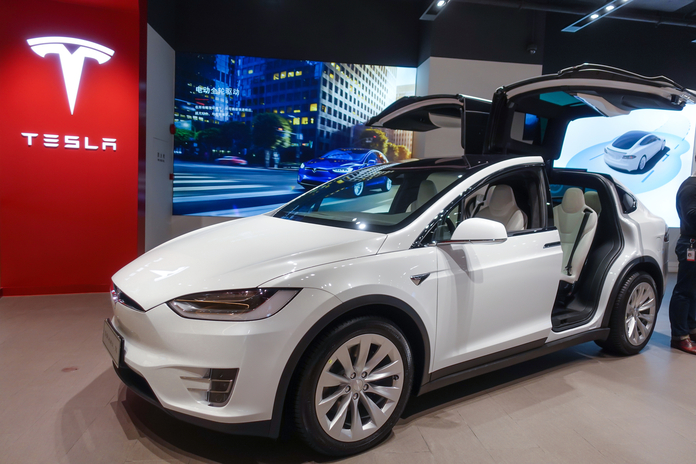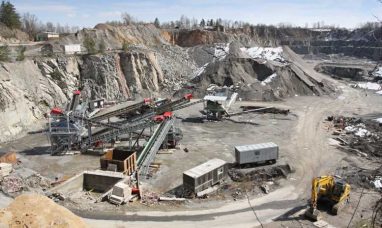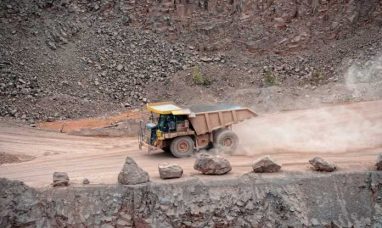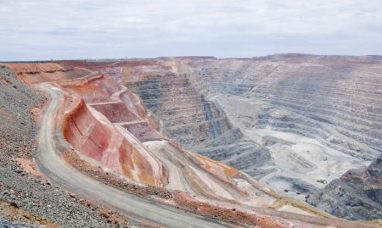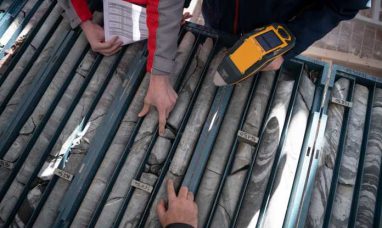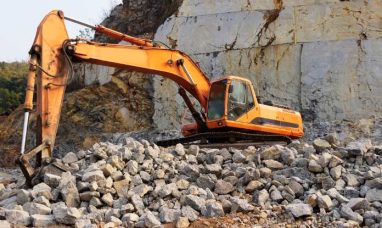Tesla (NASDAQ:TSLA)
In light of General Motors’ (NYSE:GM) recent decision to invest in Lithium Americas (NYS:LAC), we will discuss reasons why Tesla (NASDAQ:TSLA) could cooperate with lithium suppliers in this piece.
The Game Has Just Started
Do you have any memories of playing musical chairs as a child? General Motors has just just started the song by joining the Lithium Americas Thacker Pass project, cutting off Thacker Pass from the future supply of lithium for a considerable amount of time.
What advantages do combining LAC and GM offer? First, for ten years with the option to extend to fifteen, GM will have exclusive rights to the whole stage one production of the 40k. In addition, GM has the option to buy the rights for phase 2, which would allow for the extraction of an additional 40.000 tonnes of lithium, bringing the total extraction to 40.000 tonnes. In reality, GM just disconnected Thacker Pass from the lithium supply chain. As additional businesses collaborate, the supply chain of the future will inevitably become more constrained.
Some of us have been wondering for years why big automakers like General Motors, Tesla, Ford (NYSE:F), and other market leaders have not taken action to assure the necessary lithium supply by investing in lithium-mining companies. After all, if you were creating electric vehicles that required lithium, vertical integration might make sense. Automakers have refrained from investing in the lithium supply despite mining corporations buying holdings in other lithium miners or technological ventures, such as Rio Tinto (NYSE:RIO) buying a 4.9% stake in Nano One (OTCPK:NNOMF). Instead, despite the fact that it normally takes more than ten years to establish a mine from the ground up, they have pleaded with the industry to increase the number of lithium mines. The car industry was at ease, enjoying itself, and hopeful that matters would be resolved.
All of that changed when General Motors revealed that it will invest a sizable sum (10–20%) in Lithium Americas, depending on future share prices. Much of this is excellent news for clay-based lithium and LAC, the fact that this was the opening salvo in the epic electric car war makes it even more significant.This essay will look at Tesla and possible partners it might look to work with in order to stay on the cutting edge.
The Great Electric Lithium War
The question “Why invest in an electric car maker when you can just buy the lithium that they all need?” crossed my mind in the past. Which manufacturers win the great electric war is therefore unimportant.
But because TSLA is currently trading for less than $200, I have been buying Tesla stock because, to put it simply, it is undervalued. You’ll understand why buying Tesla makes sense if you want to lower your cost of goods by owning a stake in (or even the entire lithium miner). Tesla may be able to maintain or increase its competitive edge if it adopts GM’s strategy. I therefore have high hopes for Tesla stock and lithium in general.
Considering an electric future
As we look to the future, the first thing we must consider is the demand for lithium. We can sort of trace the money because there are several projects being worked on that will require the element. Note how much money Mercedes-Benz, Ford, and Volkswagen are spending on electric vehicles in the numbers below. Consider the following tips when deciding who might be the next investor in lithium mining companies.
Following the money reveals that hundreds of billions are being invested on lithium and the infrastructure that supports it. Consider the names and consequences of the following: Volkswagen is investing $180 billion on lithium, followed by investments of $50 billion, $44 billion by Mercedes-Benz, $7 billion by General Motors (for just Michigan), and $1.4 billion by Honda over a five-year period. While Tesla invested $717 million to build a Gigafactory in Mexico and an expansion of the Austin Gigafactory, GM invested $1 billion in Mexico. A minor fraction of the overall increased demand is represented by this. All of the aforementioned automobile projects will need lithium, and because General Motors has given up all of its stake in Thacker Pass, we may anticipate that other automotive agreements involving the selling off of lithium mines are currently in the works.
Tesla Should Invest in a Lithium Mine
While some investors may find the idea of Tesla investing in a lithium mine surprising, Tesla has been thinking about it for a while. Tesla and Simbol Materials were negotiating to be acquired by Tesla for $325 million before the bankers advising Simbol went mad and tried to convince Tesla that the company was worth $2.5 billion. It’s clear that didn’t work out.
Tesla apparently tried to establish an agreement with Cypress Development, which is now Century Lithium (OTCQX:CYDVF), but nothing ever materialized. Tesla reasoned that since everything was going on, it could simply establish supply agreements. It has worked in the past, but the scenario becomes far more expensive for the manufacturer when suppliers modify their terms. Consider how Piedmont Lithium (NASDAQ:PLL) raised Tesla’s costs as one example. Which brings us back to the fact that if Tesla wants to help control costs and secure supply, it must enter the lithium industry. There are primarily two contenders. The logical choices in light of this would be:
- Lithium utilizes bases in the United States or Canada for the best IRA credits.
- Mining companies near Giga Factories to reduce lithium transportation logistics costs (assuming that future plans include processing the raw lithium into a form Tesla wants… be it lithium carbonate or lithium hydroxide.)
- The projects need to be farther along in the process of finding gold rather than just being in the discovery stage. (Bonus points are awarded for a pre-feasibility study or definite feasibility study.)
- It should be easy to get the appropriate regional and, if necessary, federal approvals.
- It will be ignored that Tesla allegedly bought 10,000 acres. Although it’s been said that this is on land in Clayton Valley, if that were the case, they would have a water shortage because there aren’t any further water rights available. We will therefore ignore it. A significant part of the enthusiastic yet speculative lithium prospectors are disqualified by this self-imposed threshold. It’s not impossible for them to be, but by 2026–2027 we need measures that are more close to being put into action. There are now only two front-runners in the US.
Century Lithium
Our top option is Century Lithium (OTCQX:CYDVF). There was speculation that Tesla was in touch with Cypress Development, now known as Century Lithium, around 2020. Tesla might want to consider that relationship in the past. Century Lithium holds water rights in Clayton Valley (only one of three companies that does). They could potentially produce 27,400 tonnes of lithium a year with their 1,770 feet of usable land. A DFS is anticipated in Q2, but I’ll wager Mr. Murphy steps in and it is postponed to Q3. The company is in the process of obtaining regional and federal permissions because the project will be on BLM property.
Century Lithium is located 325 kilometers (202 miles) away from Tesla’s Nevada Giga factory in Nevada. Similar to many lithium companies, Century is in loan negotiations with the government. The mine is 202 kilometers away from Tesla.
They could load and ship through from Los Angeles and transport it north to the Reno region. Although the cost and effectiveness of this are unknown, rail typically carries materials rather effectively due to its low rolling friction.
Standard Lithium
Our second choice is the Standard Lithium (NYSE:SLI) business, which is based in Arkansas. Standard could cooperate with Lanxess and is located on currently private property. Standard Lithium is 423 miles by car from the Giga facility in Austin, Texas. The company that invented the patented DLE technique that Standard Lithium employs is now owned by Koch, which is an interesting side fact. The same Koch who provided $100 million to Standard.
Risk
Sincerely, the risk for Tesla or any other automaker is that the music will stop if you wait too long. Lithium “chairs” might all be taken, making it quite challenging to find supplies. The opposition might have acquired a specialized, exclusive supply and discounts during this time (much like GM has achieved with Thacker Pass). Because most automakers may simply issue shares or use credit lines to pay for transactions, there is no risk in terms of capital.
Bottom Line
I fully expect that Lithium Americas, Century Lithium, and Standard Lithium will receive government loans. It’s possible that share prices would react favorably, which would raise Tesla’s investment costs for the latter two. Tesla must therefore move quickly to maintain its market share in lithium. If we take a long view and consider the cost-saving synergy between Tesla and lithium miners, I don’t see any reason not to hold both of them. Where will electric vehicles be in five or ten years? The answer is that more individuals will purchase electric cars as a result of worldwide governments’ efforts to outlaw internal combustion engines by 2030 and/or 2035 in some countries. For Tesla and lithium mining stocks, this is bullish. Therefore, Standard Lithium, Century Lithium, and Tesla are all smart investments for the patient investor.
Image: Megapixl @ Photomall



